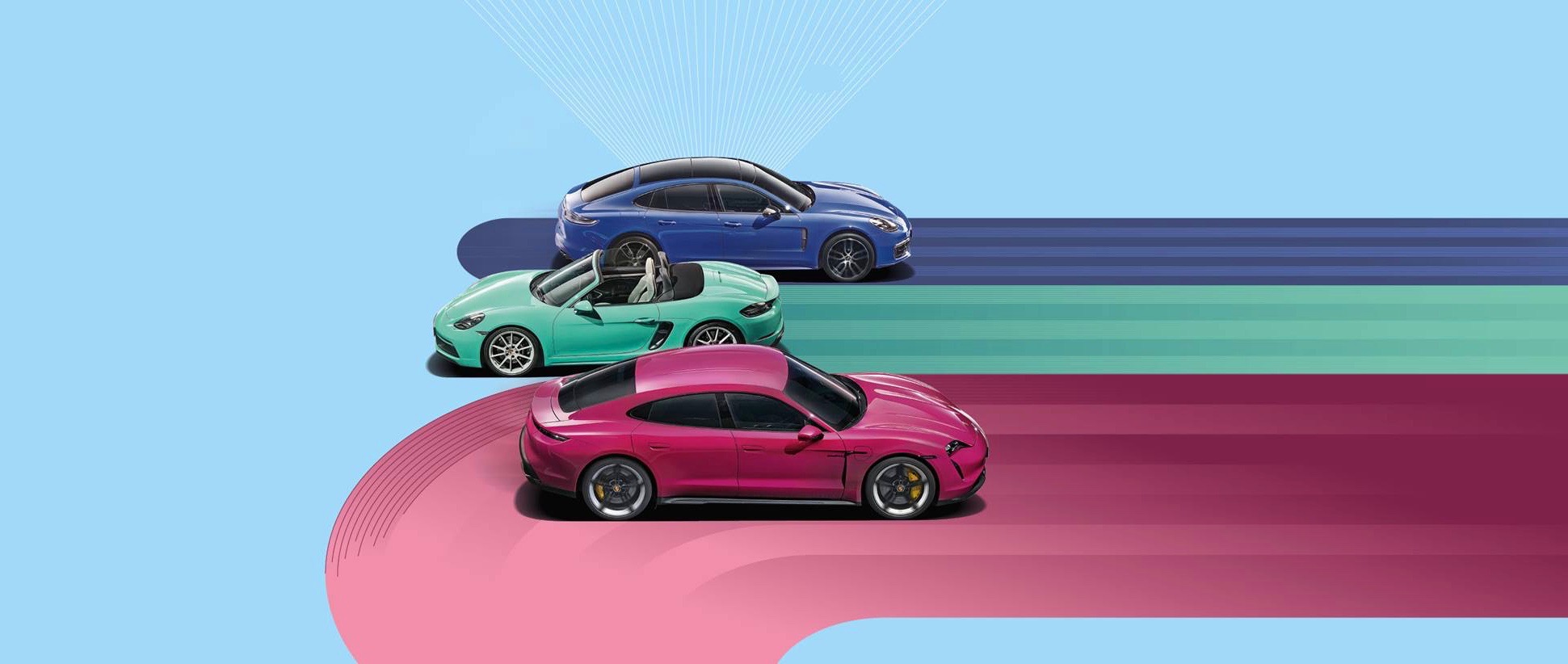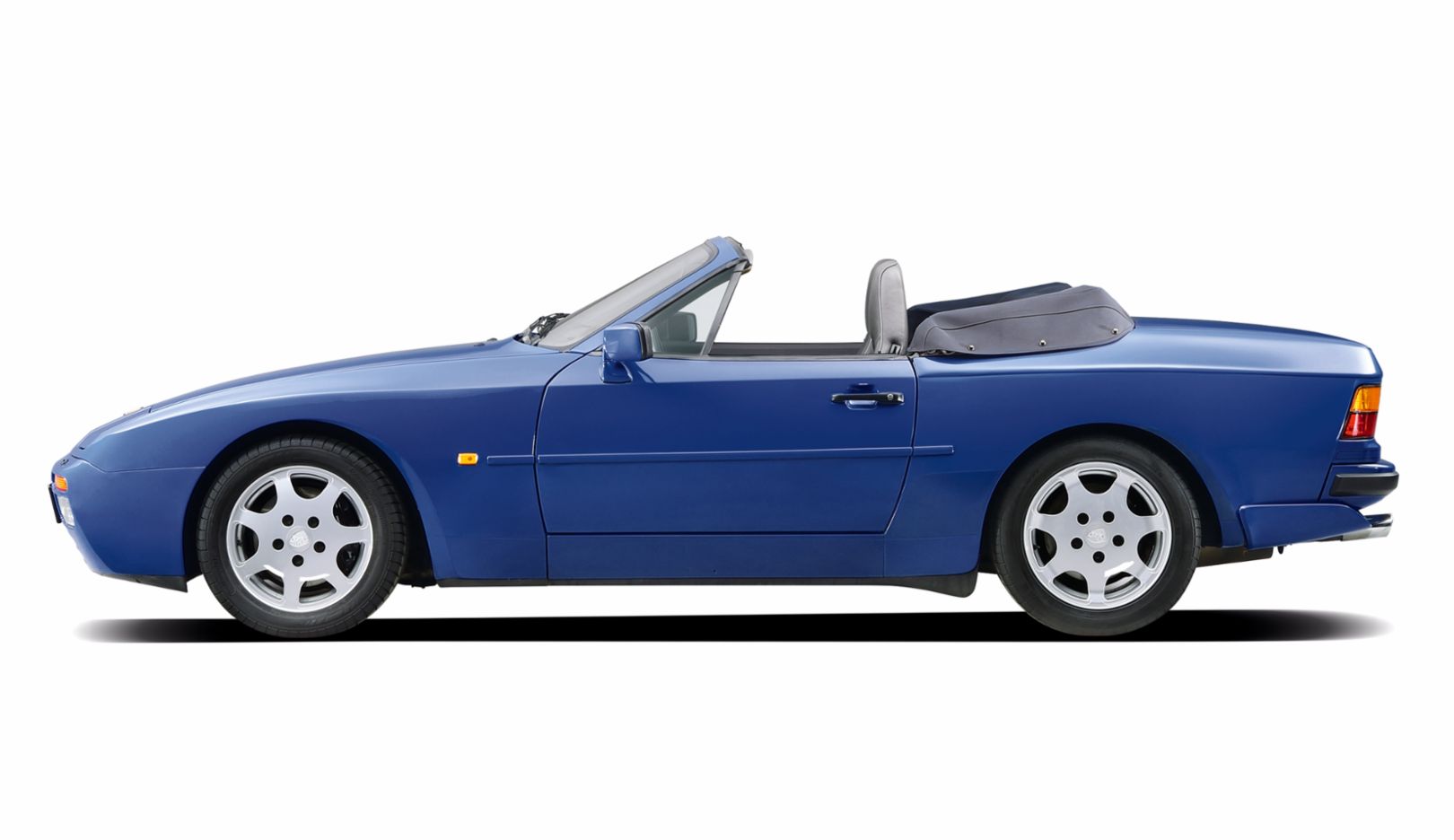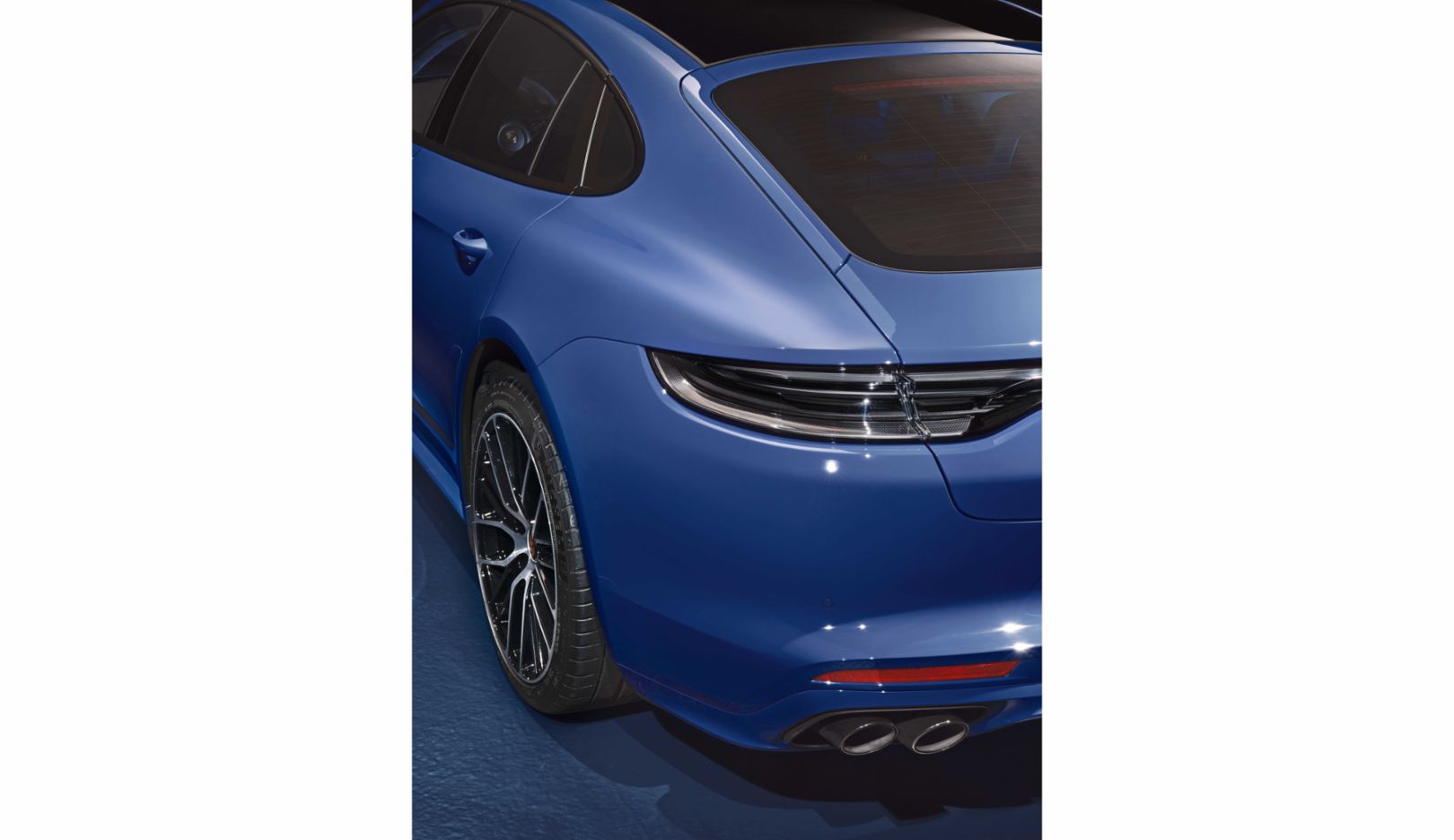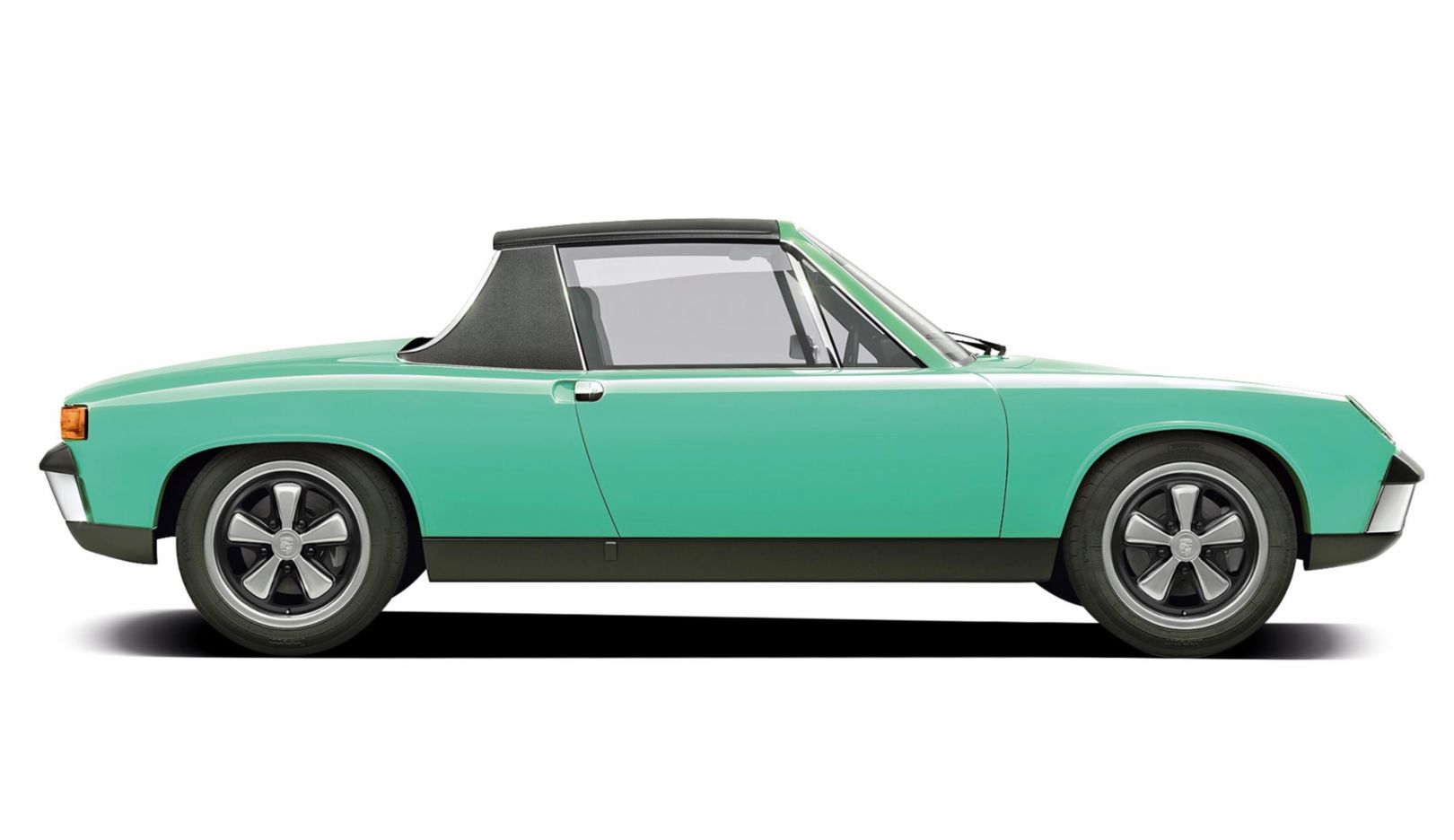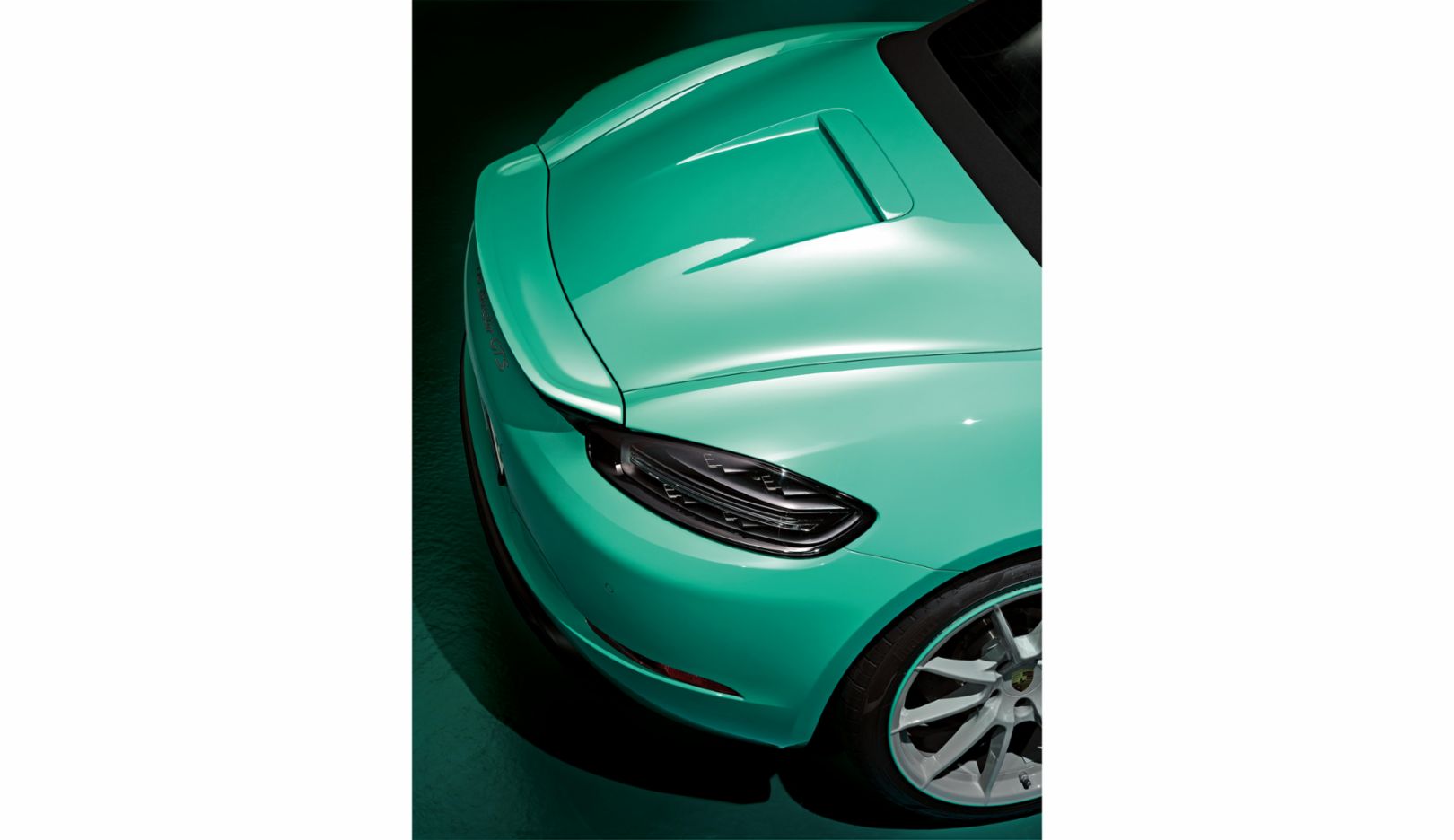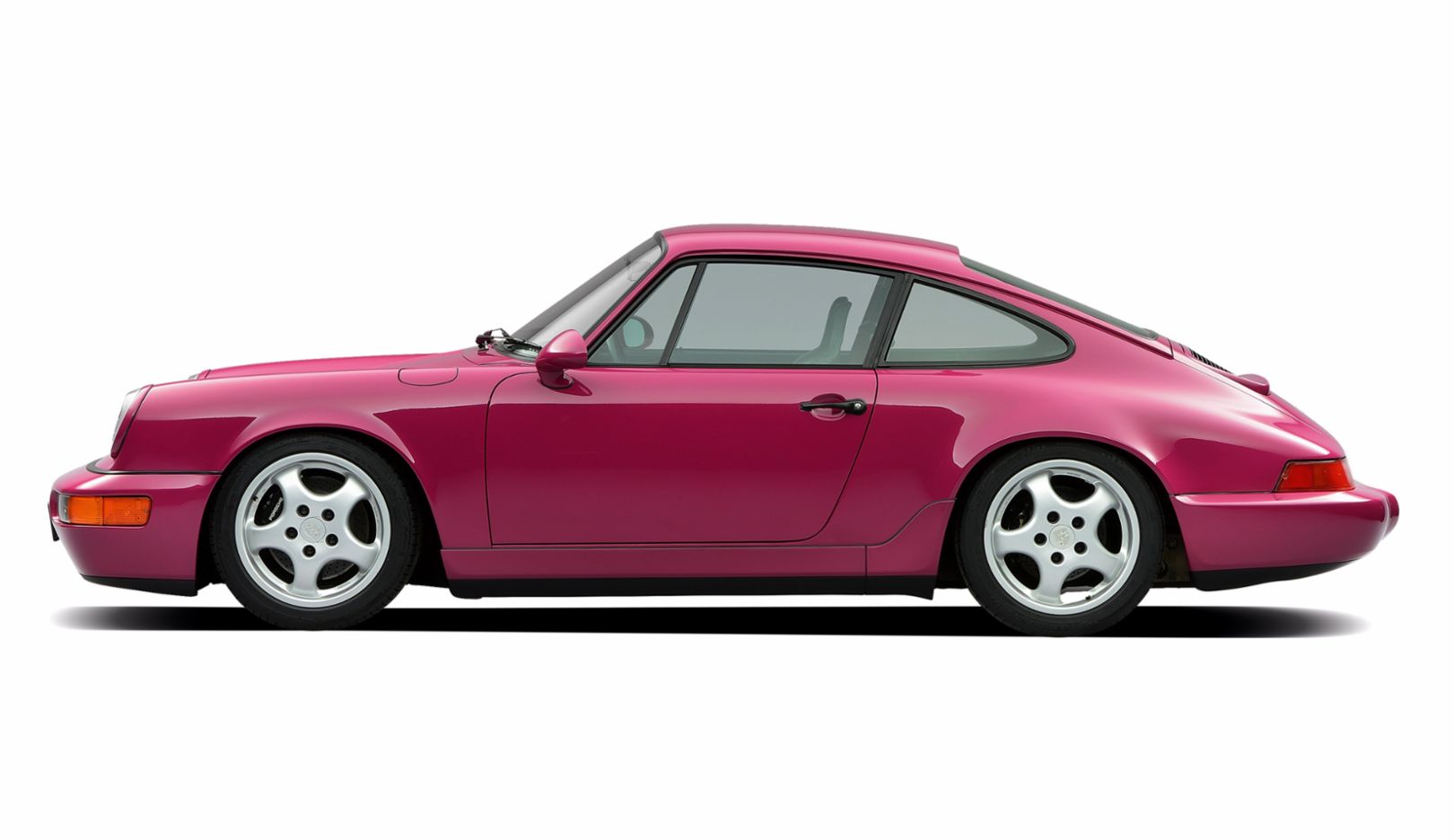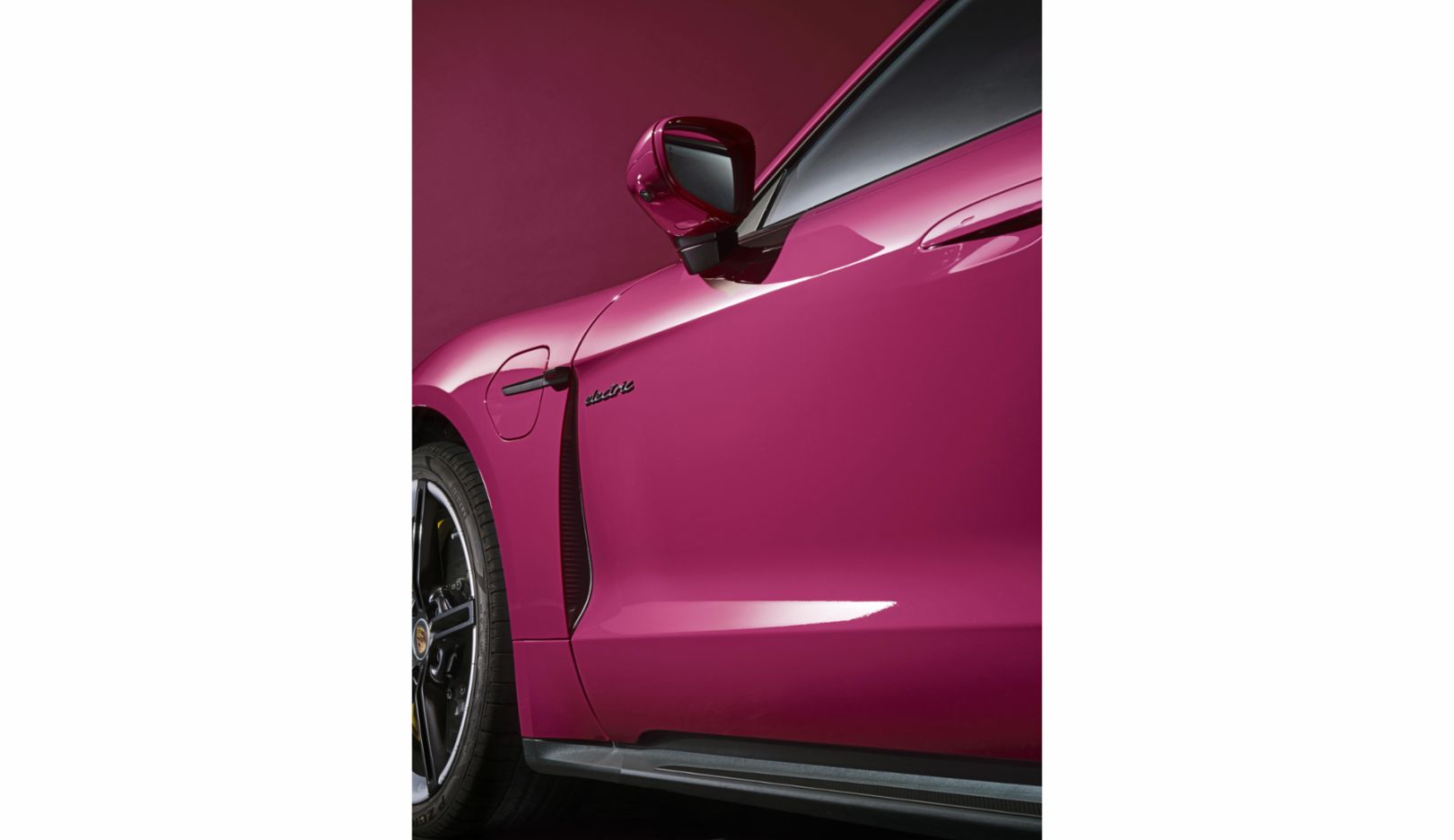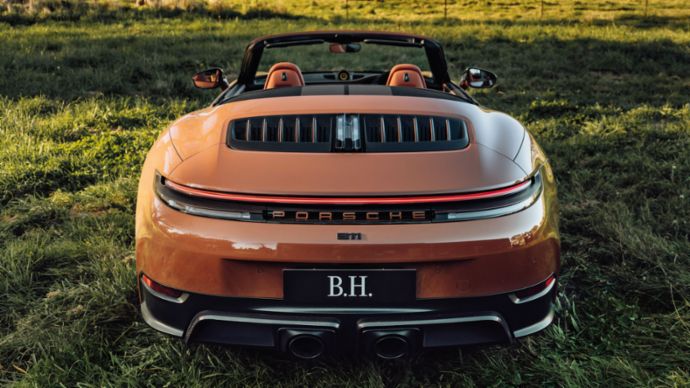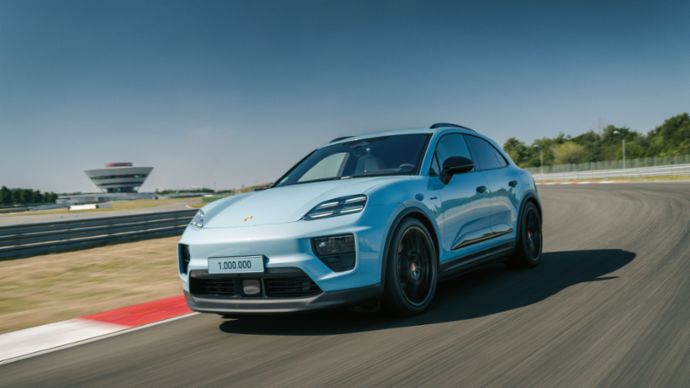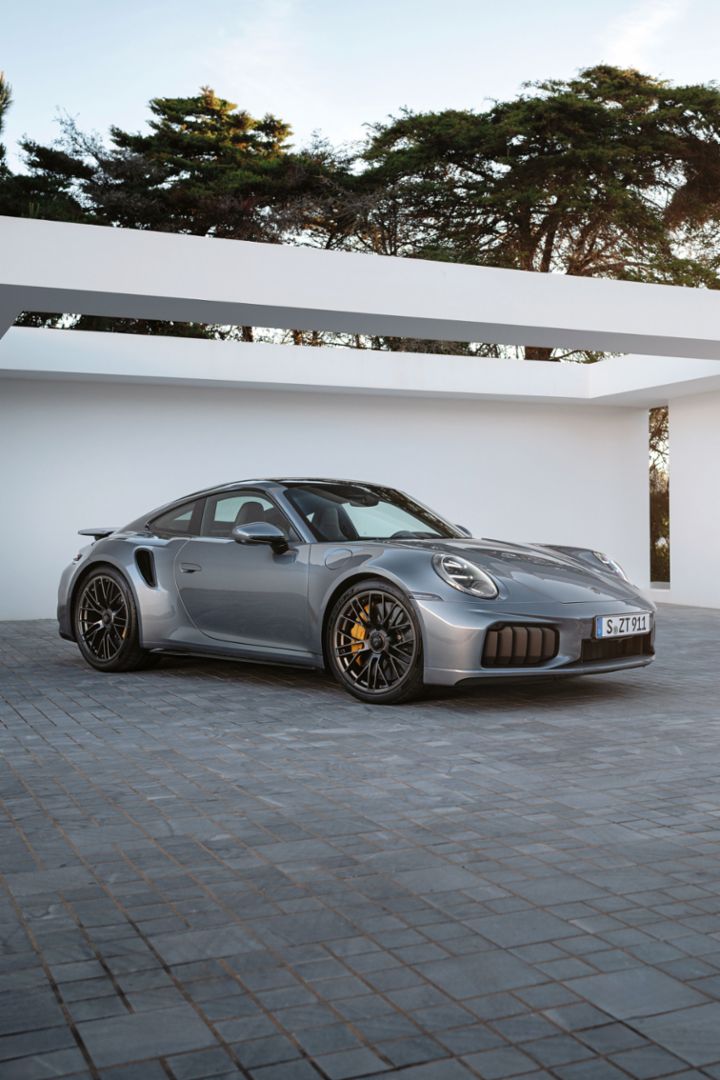Infinite Spectrum
Colors release their power with dazzling force, nostalgic tenderness, and all the nuances in between and beyond. Porsche makes dreams come true in Maritime Blue, Mint Green, Rubystar – and an almost infinite number of other shades. Including Saucer Orange.
Where is sky blue more intense – at the foot of a mountain or at the summit? The Genevan naturalist Horace Bénédict de Saussure constructed a measuring instrument for the color of the sky at the end of the 18th century. Known as a cyanometer – a kind of color wheel with a hole in the middle and 53 shades of blue around the edge – it went down in scientific history. Probably its most famous user was the German naturalist Alexander von Humboldt. He took the device with him on his first South American expedition in 1802 and measured the blue values of the atmosphere at the summit of the Ecuadorean volcano Chimborazo. As early as the 17th century, the English researcher Isaac Newton had experimentally proven that white light is composed of different colors. He separated them with a prism and brought them back together as white light. In this way, all basic colors can be created.
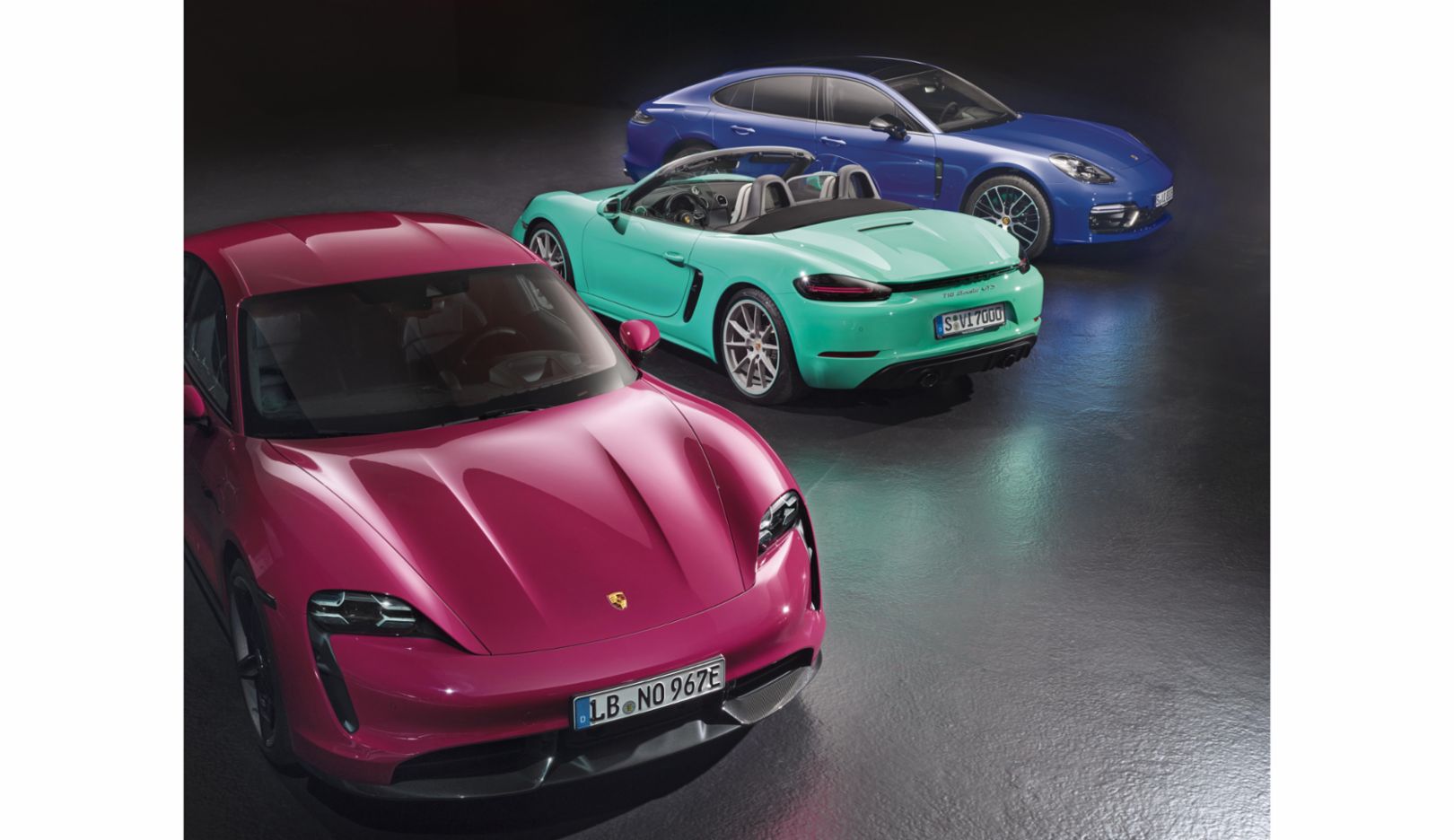
How are colors created and what effect do they have? These questions still occupy science – and Porsche – today. The task of color and trim designer Daniela Milošević is to create colors for the automobiles of tomorrow that underline the character of the vehicles. “For the Taycan, this was, among others, Neptune Blue,” she explains. “It has a more gentle feel than our Shark Blue, which in turn combines perfectly with the sporty GT3.” Frozen Blue Metallic, also created for the Taycan, is another shade that means more to her than just its composition of pigments: “It symbolizes the lightness of electromobility, makes use of trendy pastel shades, and, at the same time, references the history of Porsche.”
Boris Apenbrink deals with historical colors on a daily basis. He heads the Vehicles division of the Porsche Exclusive Manufaktur in Zuffenhausen. “There are hardly any other design features with which customers can make such a strong statement as with a special color,” he says. The majority of customers order historical colors. Right at the top of the popularity charts? “The famous Gulf Blue as a memento of the successful Porsche 917 of the 1970s.”
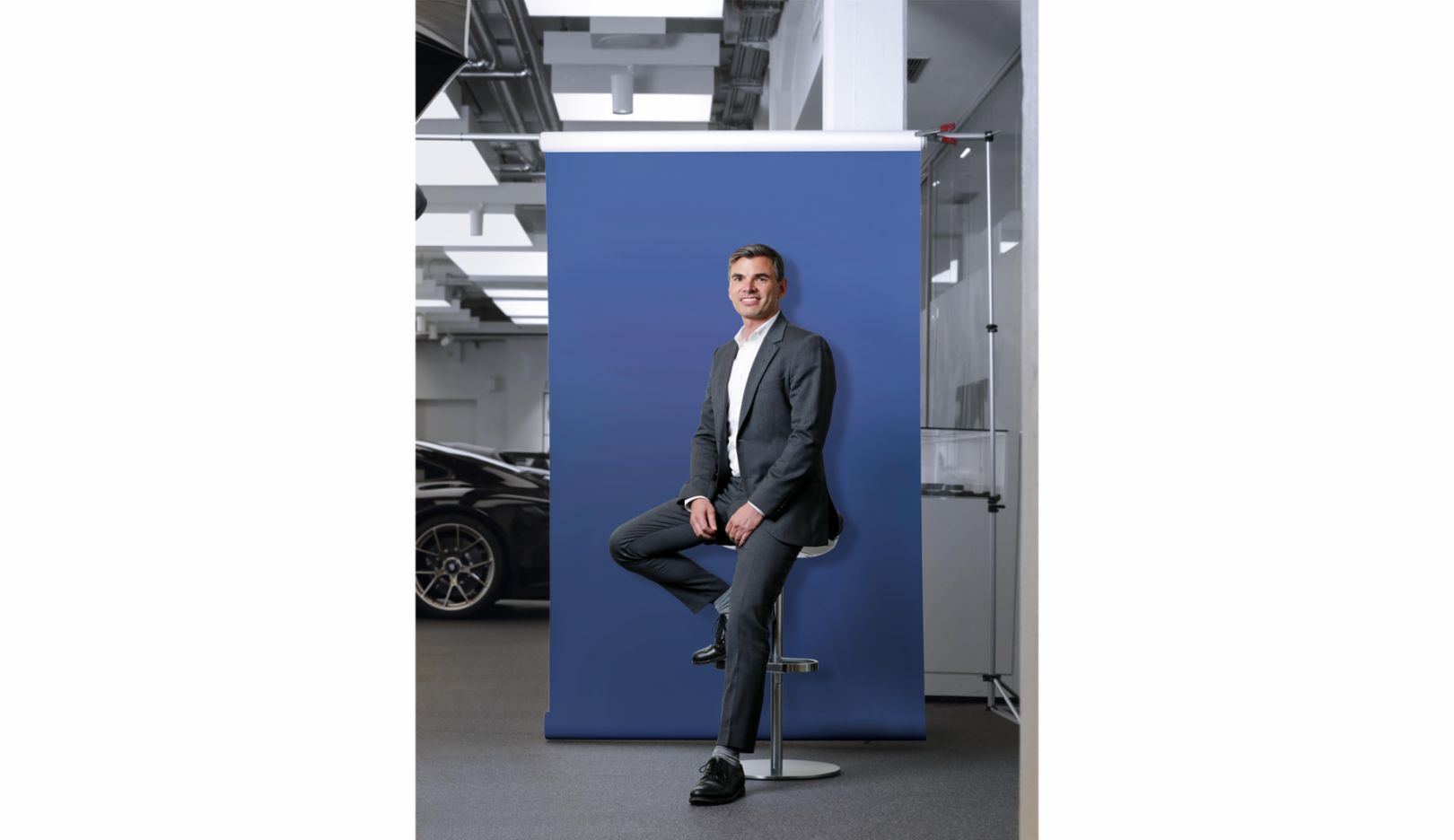
“There are hardly any other design features with which customers can make such a strong statement as with a special color.”
Boris Apenbrink, Head of Vehicles at Porsche Exclusive Manufaktur
More and more customers want ever more personal colors. To meet the demand, a team of engineers, designers, and product managers has opened up new scope for selection. A Herculean task. Jonas Friedrich is one of those engineers: “In addition to the series, metallic, and special colors, we offer the Paint to Sample and Paint to Sample Plus options, which represent an almost infinite spectrum,” he says excitedly. The first option includes a palette of colors that have already been tested. The Plus of the second variant represents individual new creations based on color samples submitted by customers.
Friedrich illustrates the scope of Paint to Sample using the examples of the 911 model series: “From now on, in addition to the four standard colors, eight metallic colors, and the five special colors, a customer can also choose from up to 105 additional shades. We produce each of them individually per vehicle in our new color mixing bank in Zuffenhausen. They are applied to the bodywork in the same paint shop as the paint of the series color programs. That requires extensive process coordination, but guarantees identical quality.”
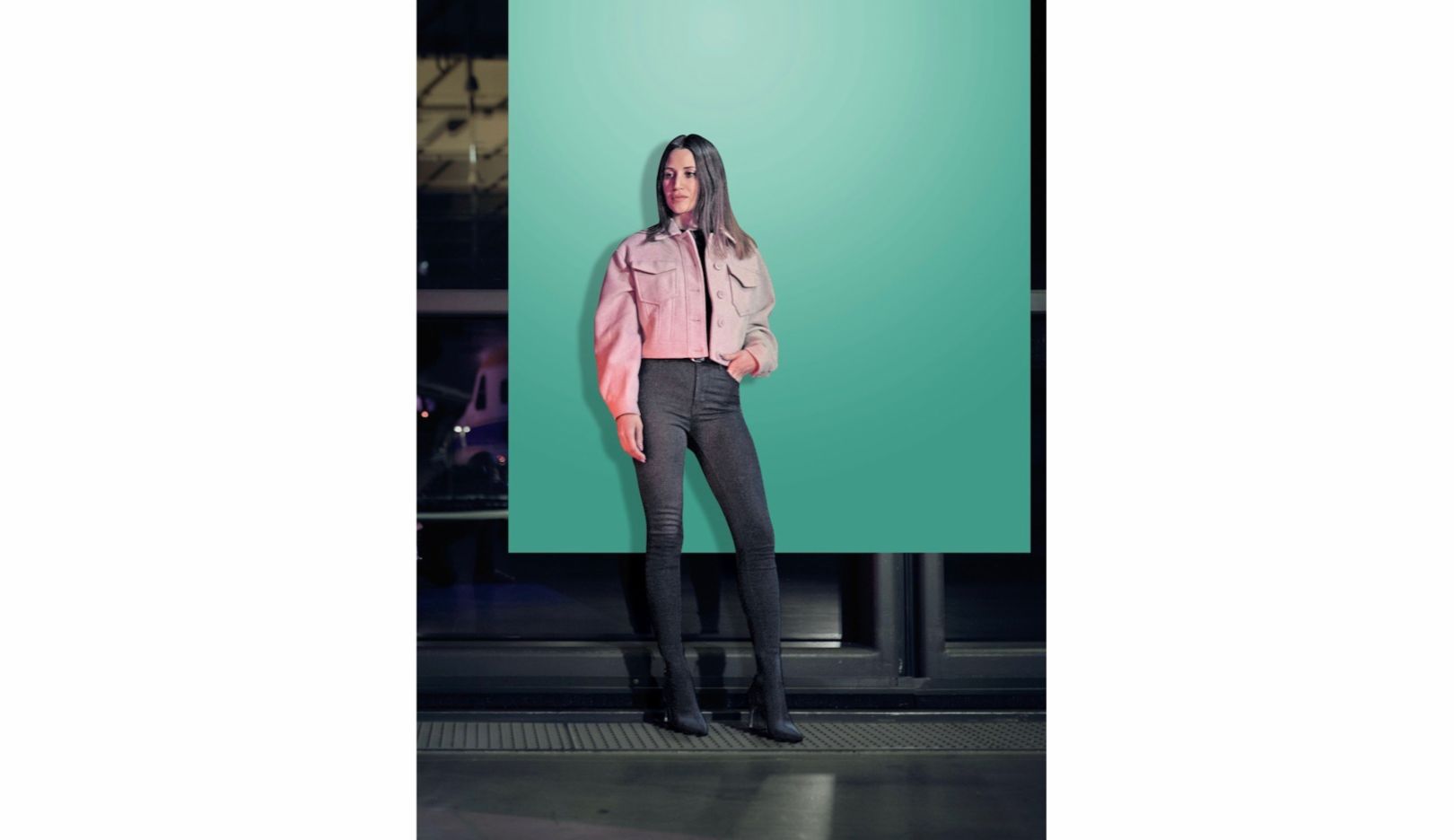
“Nowadays, we only use water-based paints. The pigments of historical paints are not sufficiently light-resistant for today’s standards.”
Daniela Milošević, color and trim designer
The Paint to Sample Plus option arose from experiences with particularly creative customers. “A Swiss designer wanted his 911 Turbo S to be painted in the same orange as his breakfast tableware,” explains Boris Apenbrink. “Another customer wanted the blue of a very special 911 R from 1967. The shade is called Reventlow Racing Blue, named after an American racing team. We had almost 50 samples made, until we reached our target for that color tone as well.”
Apenbrink explains the path from an exclusive color request to an industrially processed result: “It is extremely laborious. We are bringing back development processes in series production that we stopped using long ago.” After all, what ends up as a uniformly painted vehicle for the customer is in reality a technically complex work of art. “First of all, we work with the paint supplier to reproduce the customer’s sample in detail. Then we test different formulas on sheet metal, plastic, and CFRP parts to see how the paint particles behave in each case.” This process not only has to be carried out in Zuffenhausen for the chassis, but also at suppliers of attachment parts such as door handles and spoilers. Robin Rohrbeck, purchase specialist for paints and coatings, adds: “In the visible chassis area of a 911 alone, at least five different materials are relevant, from the aluminum component to the carbon fiber composite.” To achieve a perfect result, depending on the component, each paint of a color needs its own chemical composition and processing – even the drying temperatures vary between 80 and 140 degrees Celsius.
Apenbrink reports from the test phase: “The CFRP front hood of a 911 GT vehicle is one such supplier part. The dipcoat primer without a hood is no problem. But in the paint shop, we found that the spray mist from the painting robot is distributed differently on the surfaces of a body shell without a front hood. As a result, the system had to be reprogrammed.”
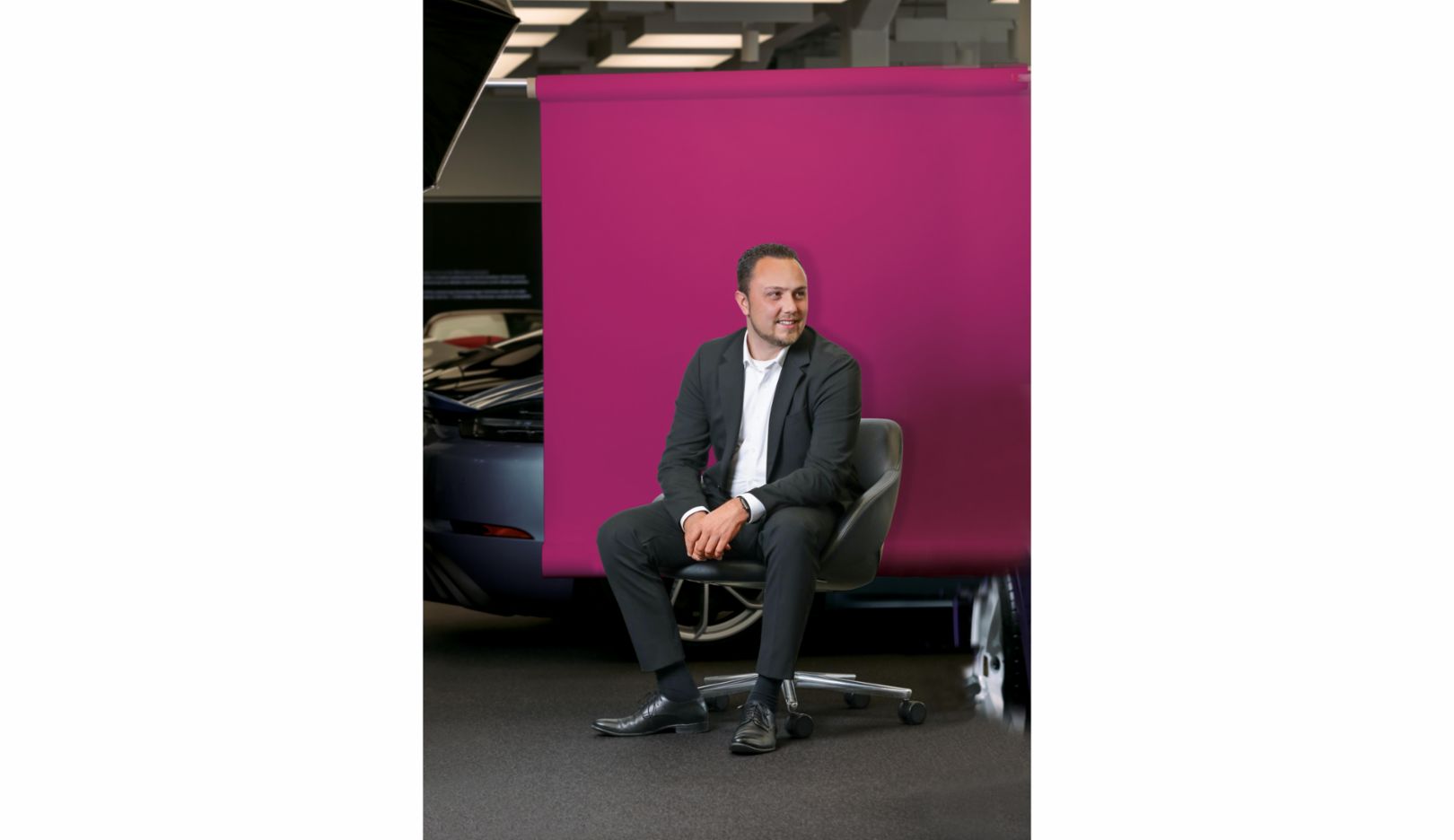
“In the visible chassis area of a 911 alone, at least five different materials are relevant, from the aluminum component to the carbon fiber composite.”
Robin Rohrbeck, purchase specialist for paints and coatings
In order to find out how the ultrafine paint particles are distributed down to the last drop, at least one complete test body is put together for the Paint to Sample Plus option. The visible paint layer is only about 10 to 30 micrometers thin, but underneath it, a multiple-part structure is concealed. Red tones, for example, require red primers. “With yellow in particular, you have to take a close look at the pigment distribution on the door pillars,” emphasizes Daniela Milošević. And their shade should still match the color of the exterior, which is exposed to the sun and other weather influences, after many years. In order to meet the high Porsche standards, development processes for colors of the series programs generally take several years. In long-term tests, painted surfaces are exposed to sunlight for 24 months or to aggressive substances such as rim cleaners. Thanks to state-of-the-art simulation techniques and color mixing benches, it has been possible to reduce this time period to half a year for the Paint to Sample Plus program.
Back to the preferences of Boris Apenbrink’s clientele: it would be a mistake to think that classic and historical colors could simply be pulled off the shelf. For the Paint to Sample program with its 105 paint finishes based on examples that were, in some cases, decades old, completely new developments were often required. For example, the famous Rubystar, which caused a stir in the nineties on the 911 Carrera RS, but also suits the Taycan very well, is not so easy to recreate in a modern-day version. Milošević explains: “Nowadays, we only use water-based paints, whereas back then, solvent-based paints were still in use. What’s more, the pigments of those paints are not sufficiently light-resistant for today’s standards. We had to reduce the saturation, without losing the radiance of the color.” Apenbrink has another dazzling story ready: “For a special edition of the current 911 GT3 Touring, we wanted to revive an old paint from the Porsche 356 – Fish Silver Grey Metallic. Actual fish scales were used for the original paint. We had to develop a completely new recipe.” In Zuffenhausen, two Porsche color laboratories are now working on such tasks. For a new creation, the customer can come up with a name themselves.
More than 200 years after the invention of the cyanometer, the world of colors remains a multifaceted science. By the way: the cause of the variety of shades of blue in the sky was established in the 19th century by the British physicist and Nobel Prize winner Lord Rayleigh. He proved that the shorter blue waves of sunlight are scattered more strongly by air molecules than longer red ones. Thanks to this scattering, we can enjoy sky blue in up to 53 different shades. A mere drop in the ocean of colors offered by Porsche.
Consumption data
718 Boxster GTS 4.0
911 Carrera GTS
-
11.0 – 10.4 l/100 km
-
248 – 236 g/km
-
G Class
-
G Class
911 GT3 with Touring Package (2023)
-
12.9 l/100 km
-
293 – 292 g/km
-
G Class
-
G Class
911 Turbo S
-
12.3 – 12.0 l/100 km
-
278 – 271 g/km
-
G Class
-
G Class
Macan 4 Electric
-
20.4 – 17.8 kWh/100 km
-
0 g/km
-
A Class
Taycan Turbo S (2023)
-
23.4 – 22.0 kWh/100 km
-
0 g/km
-
A Class
